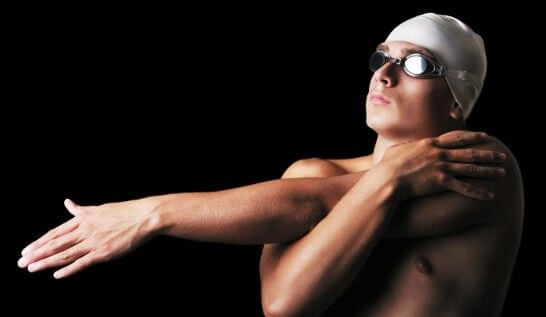Where Does It Hurt: Swimmer's Shoulder
- Category: Blog
- Posted On:
- Written By: PVHMC - Admin

Question: My right shoulder has been hurting during my swim workouts for the past few months. Recently, my shoulder has been aching almost all the time and seems to be aggravated by any reaching or lifting activity and wakes me up if I turn on my right side in my sleep. My shoulder no longer tolerates any swimming at all. I’ve been a swimmer for most of my life and don’t want to give it up. Will I ever be able to swim again?
Answer: Swimmer’s shoulder is the swimmer’s version of a common shoulder inflammatory condition known as impingement syndrome. This condition occurs as a result of impingement (pinching) of soft tissues between the head of the humerus and the coracoacromial arch (bone and ligament overlying the top of the humerus). The pinched, inflamed tissues may include bursa, the biceps long head tendon, or the supraspinatus tendon of the rotator cuff. The repetitive overhead motion of the freestyle stroke is the most common cause of swimmer’s shoulder. Swimming technique can influence the amount of impingement that occurs, therefore, correction of faulty technique will be a critical factor in your successful return to swimming. I am not a swimmer so I recommend consulting a swim coach for tips on your technique. However, as a general rule during freestyle swimming, you should try to avoid overreaching, avoid crossing midline as your hand enters the water and maintain a more externally rotated position of your shoulder during recovery.
Other factors that may contribute to swimmer’s shoulder include tightness of chest and shoulder musculature, weakness of scapular and rotator cuff musculature, and overtraining (continuing to swim with fatigued muscles).
Before you get back in the water, you need to allow the inflammation of your shoulder tissues to subside. Avoid activities that involve reaching or lifting up, away from, or across the body. Maintain full shoulder range of motion with gentle stretching and apply ice for 10-15 minutes 3-4 times a day.
As symptoms start to decrease you can begin light strengthening exercises, especially inter-scapular strengthening (to promote better posture) and strengthening of the rotator cuff musculature. This is best achieved with light weights, focusing on specific muscles. Apply ice after exercise.
When you have been pain-free for 2-3 weeks you can gradually return to swimming. Avoid rapid increases in training distances or frequency of training. Train with good technique and with a variety of strokes to reduce the number of repetitions of one particular motion. Consult your doctor if your pain persists.
David Kandel, PT, OCS, CSCS
PVHMC Physical Therapist
909-865-9810



